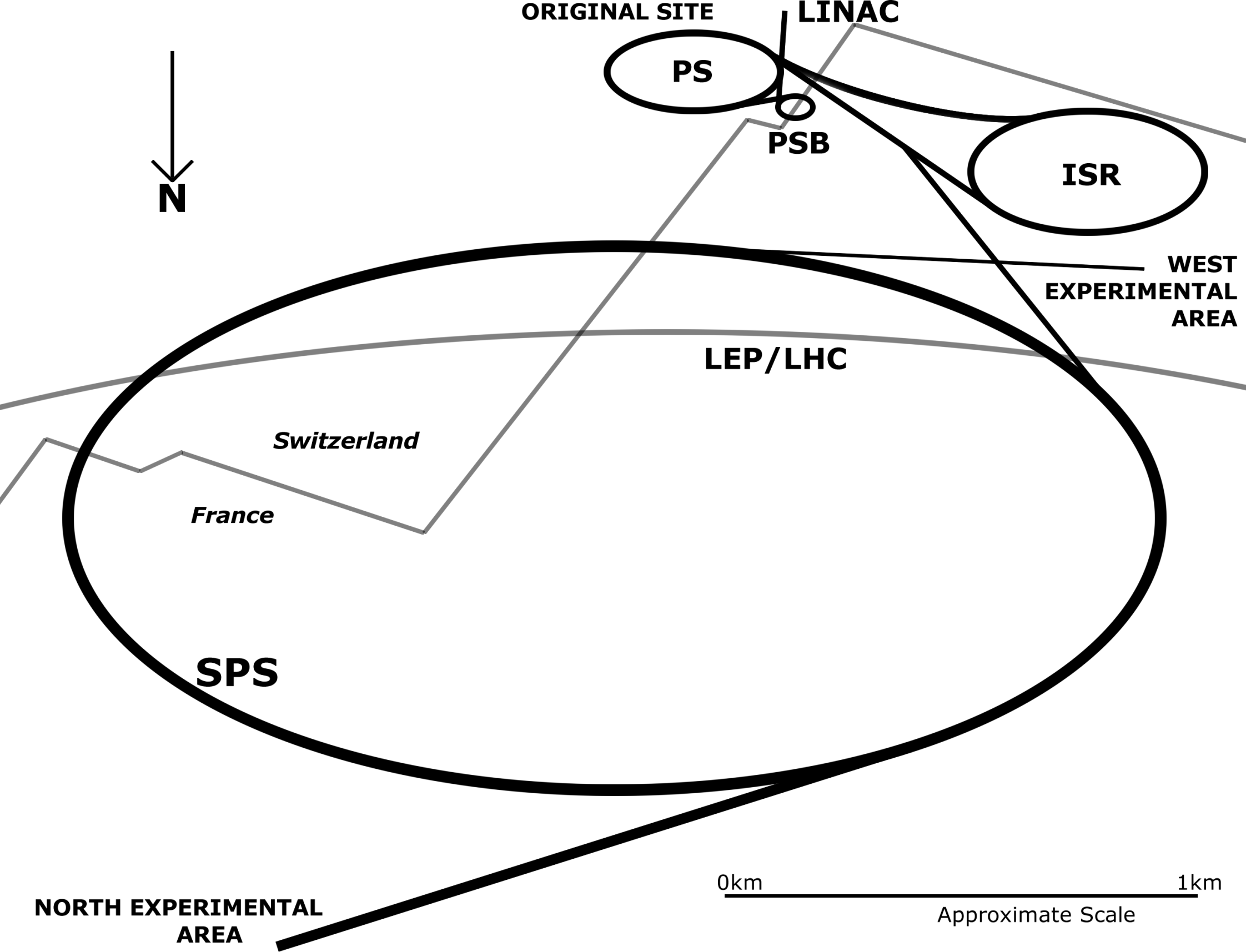 The layout of the CERN accelerators around the Super Proton
Synchrotron.
The layout of the CERN accelerators around the Super Proton
Synchrotron.  The layout of the CERN accelerators around the Super Proton
Synchrotron.
The layout of the CERN accelerators around the Super Proton
Synchrotron.
Protons, anti-protons, and ions start their journey in a linear accelerator (LINAC). Each particle family has its own, because each has very different masses. For example, a proton is almost 2000 times heavier than an electron. Typical final energies are 500 MeV for electrons, 50 MeV for protons, and 4.2 MeV per nucleon for lead (Pb) ions.
Protons and heavy ion beams are then directed into the 1.0 GeV Booster synchrotron (the PSB) to increase their energy.
From the linear accelerator or the booster, the particles make their way to the original Proton Synchrotron (PS), and the beams are then injected into the bigger rings for further acceleration (SPS, ISR, LEP or - in future - LHC).
The SPS uses its magnets to bend two particle beams going in opposite directions (e.g. positive protons and negative anti-protons) and keep them in orbit. The beams are then collided under a detector on the ring. Alternatively, single beams are accelerated and then collided with targets in the West and North experimental areas. It is the particles created in these collisions that are closely examined, by a wide range of detectors, for new particles or behaviours.